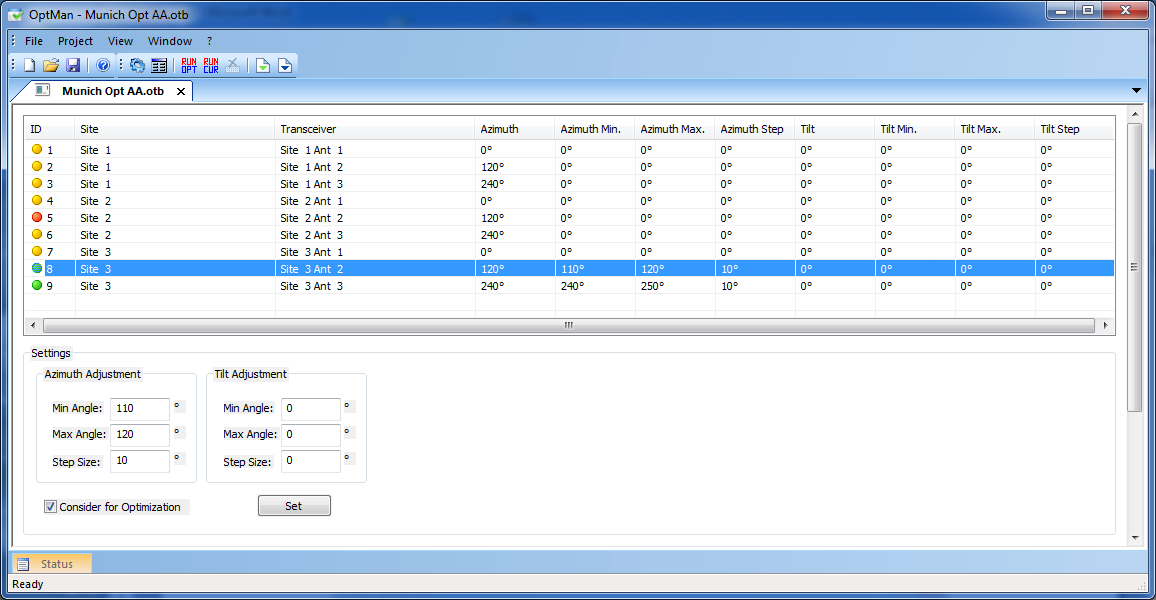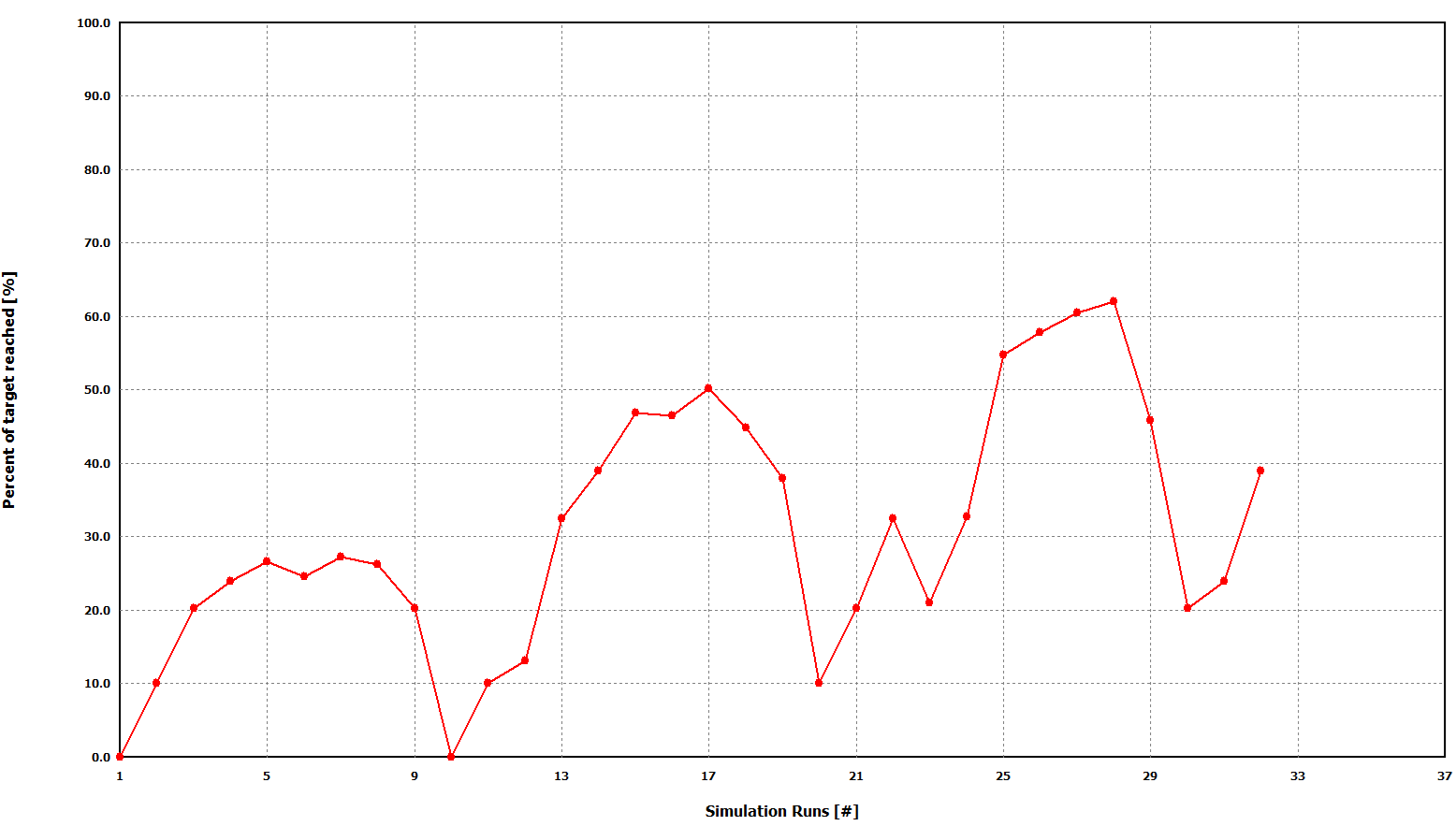Antenna Adjustment Optimization
For the optimization of the adjustment of directional antennas in azimuth and tilt, the user can define a range and increment for each antenna separately. The azimuth for one antenna can be changed, for example, between 10° and 50° with an increment of 10°, whereas the tilt of the same or another antenna can be specified to vary between 5° and 15° with an increment of 5°, for example. Individual antennas can also be excluded from the optimization process and considered as fixed. Furthermore, the antennas disabled in the ProMan project are also listed.
Figure 1 depicts the graphical user interface of OptMan with the list of all antennas included in the ProMan project in the upper field. The color in the first column indicates if the antenna shall be considered for the optimization (green), shall be considered as fixed (yellow) or is disabled (red). The lower field allows to consider the antenna for optimization and to define the optimization range for each antenna individually.

Figure 1. Graphical user interface of the WinProp optimizer.
For the optimization of the azimuth and tilt values for the individual antennas an optimization target has to be defined. Therefore the user has to select a result (for example, SNIR) which shall be used for optimization. For this result at least one target threshold has to be specified.
The tool will automatically compute all combinations of azimuth and tilt angles and display the performance of each combination (Figure 2). After the simulation, the combination which provides the best performance can be assigned and saved in the project file.
Depending on the number of combinations the computation time can be high. However, the OptMan tool implements an time efficient approach, so that each potential sector orientation is only computed once (regarding the propagation part). Furthermore the user can influence the number of combinations to be examined, and therefore the required simulation time, by using larger increments for the angles. After a coarse tuning, a fine tuning with reduced ranges but finer increments can be done.

Figure 2. Optimization chart.